- Home Sea trials Wauquiez Pretorien 35, legend of the seas
Wauquiez Pretorien 35, legend of the seas
Built by Chantier Henri Wauquiez in Mouvaux, France, the Pretorien 35 was introduced in 1979. Although exact numbers differ, around 200 boats were launched before the model was discontinued in 1986. Designed by Holman & Pye (like the smaller Wauquiez classic, the 32-foot Centurion), the Pretorien seems more British than French. But that’s not surprising. Henri Wauquiez, who died in 1999, admired English boats and in particular the designs of Kim Holman. Wauquiez purchased his first boat in 1964, the English-built, Holman-designed Elizabethan 29. Wauquiez liked its handsome sheer and steady bearing in a seaway. Soon he began finishing out Elizabethans for the French market and a passion for sailboats blossomed into a business.
Although this IOR influenced design may appear a little dated, the Pretorien 35 is a go-anywhere design that offers excellent value and a quality of construction that rivals that of some of the finest production boats in the world. Many of the construction features, such as the six longitudinal stiffeners that run the entire length of the hull and the unique method of bulkhead attachment, are not readily apparent to the casual observer. But, you need to look no further than inside lockers to see the care the builder has taken to create a remarkably smooth, exceptional quality finish.
The Pretorien is built for ocean sailing. The hull of the Pretorien 35 is solid fiberglass and has six full-length longitudinal stringers that stiffen the panels and encapsulate the bulkheads. Although small, the cockpit has a seat-level bridgedeck forward, a very substantial welded stainless steel stern rail and is ideal for offshore passages. Side decks are wide with rigging shrouds and genoa tracks set well inboard to allow for easy passage. A foredeck anchor locker provides plenty of room for stowage of a suitably sized anchor and sufficient rode. One of the unique features of the deck arrangement, and another example of the builder’s attention to detail, are the molded mounting pads for winches with matching pads for cleats angled so that lines are led fair from the winch.
The layout of the Pretorien 35 is predictable, but it works. There is double V-berth forward that is decently sized. The saloon features a comfortable U-shaped dinette to port with a settee opposite. The nav station is also to port while the U-shaped galley is opposite and just to starboard when you drop below. The galley includes two small, round sinks (a single, larger sink would be better), a two-burner gas stove and a fridge compartment aft. A classy addition and Wauquiez trademark of the era is the ceramic tile galley counter. There is a quarter berth cabin to port suitable for two children or small adults. Joiner work is excellent throughout and storage is quite good. Three deck hatches, two solar vents and two dorade vents provide only marginal ventilation for the cabin spaces.
Like other boats of this era, including the Contessa 32, Rival 34 and Nic 35, the Pretorien 35 low sail area/displacement ratio of 15.6 is a bit misleading. The boat is a bit of a slug in light air, but that’s not what you buy a Pretorien for anyway. It is a fine performer in moderate breezes and sails like a larger boat when the wind really pipes up. Those are the sailing qualities you look for in a true offshore boat. You will appreciate the 46% ballast/displacement ratio when it is honking and you’re clawing to weather or forereaching in a deep a gale.
If you’re yearning for a very high quality boat but find most far out of your budget, the Pretorien 35 is a model worth taking a look at. The Wauquiez Pretorien 35 is quietly attaining classic status, and her seaworthy design, quality construction and proven offshore capability make it a terrific small cruiser.
Sources: “BoatUs” and “Sailing Magazine”
Condividi post su:

FLY

HARD TOP

OPEN

RUBBER DINGHY

CLASSIC OLD

MULTIHULL CATAMARAN

CRUISING

CRUISING/RACER

RACER

CLASSIC OLD

MULTIHULL CATAMARAN
Scegli Prezzo (€)
Min
- 10.000
- 15.000
- 20.000
- 25.000
- 30.000
- 35.000
- 40.000
- 45.000
- 50.000
- 55.000
- 60.000
- 65.000
- 70.000
- 75.000
- 80.000
- 85.000
- 90.000
- 95.000
- 100.000
- 110.000
- 120.000
- 130.000
- 140.000
- 150.000
- 160.000
- 170.000
- 180.000
- 190.000
- 200.000
- 220.000
- 240.000
- 260.000
- 280.000
- 300.000
- 330.000
- 360.000
- 390.000
- 400.000
- 440.000
- 480.000
- 500.000
- 550.000
- 600.000
- 650.000
- 700.000
- 750.000
- 800.000
- 850.000
- 900.000
- 950.000
- 1.000.000
- TUTTO
Max
- 10.000
- 15.000
- 20.000
- 25.000
- 30.000
- 35.000
- 40.000
- 45.000
- 50.000
- 55.000
- 60.000
- 65.000
- 70.000
- 75.000
- 80.000
- 85.000
- 90.000
- 95.000
- 100.000
- 110.000
- 120.000
- 130.000
- 140.000
- 150.000
- 160.000
- 170.000
- 180.000
- 190.000
- 200.000
- 220.000
- 240.000
- 260.000
- 280.000
- 300.000
- 330.000
- 360.000
- 390.000
- 400.000
- 440.000
- 480.000
- 500.000
- 550.000
- 600.000
- 650.000
- 700.000
- 750.000
- 800.000
- 850.000
- 900.000
- 950.000
- 1.000.000
- TUTTO
Scegli Anno
Min
- 2026
- 2018
- 2015
- 2012
- 2009
- 2006
- 2003
- 2000
- 1997
- 1994
- 1991
- 1988
- 1985
- 1982
- 1979
- 1976
- 1973
- 1970
- 1967
- 1964
- 1961
- 1958
- 1955
- 1952
- 1949
- 1946
- 1943
- 1940
- 1937
- 1934
- 1931
- 1928
- 1925
- 1922
- 1919
- 1916
- 1913
- 1910
- 1907
- 1904
- 1901
- 1900
Max
- 2026
- 2018
- 2015
- 2012
- 2009
- 2006
- 2003
- 2000
- 1997
- 1994
- 1991
- 1988
- 1985
- 1982
- 1979
- 1976
- 1973
- 1970
- 1967
- 1964
- 1961
- 1958
- 1955
- 1952
- 1949
- 1946
- 1943
- 1940
- 1937
- 1934
- 1931
- 1928
- 1925
- 1922
- 1919
- 1916
- 1913
- 1910
- 1907
- 1904
- 1901
- 1900
Scegli Lunghezza (mt)
Min
- 6,00
- 6,50
- 7,00
- 7,50
- 8,00
- 8,50
- 9,00
- 9,50
- 10,00
- 10,50
- 11,00
- 11,50
- 12,00
- 12,50
- 13,00
- 13,50
- 14,00
- 14,50
- 15,00
- 15,50
- 16,00
- 16,50
- 17,00
- 17,50
- 18,00
- 18,50
- 19,00
- 19,50
- 20,00
- 20,50
- 21,00
- 21,50
- 22,00
- 22,50
- 23,00
- 23,50
- 24,00
- 24,50
- 25,00
- 25,50
- 26,00
- 26,50
- 27,00
- 27,50
- 28,00
- 28,50
- 29,00
- 29,50
- 30,00
- 30,50
- 31,00
- 31,50
- 32,00
- 32,50
- 33,00
- 33,50
- 34,00
- 34,50
- 35,00
- 35,50
- 36,00
- 36,50
- 37,00
- 37,50
- 38,00
- 38,50
- 39,00
- 39,50
- 40,00
- 40,50
- 41,00
- 41,50
- 42,00
- 42,50
- 43,00
- 43,50
- 44,00
- 44,50
- 45,00
- 45,50
- 46,00
- 46,50
- 47,00
- 47,50
- 48,00
- 48,50
- 49,00
- 49,50
- 50,00
- 50,50
- 51,00
- 51,50
- 52,00
- 52,50
- 53,00
- 53,50
- 54,00
- 54,50
- 55,00
- 55,50
- 56,00
- 56,50
- 57,00
- 57,50
- 58,00
- 58,50
- 59,00
- 59,50
- 60,00
- 60,50
- 61,00
- 61,50
- 62,00
- 62,50
- 63,00
- 63,50
- 64,00
- 64,50
- 65,00
- 65,50
- 66,00
- 66,50
- 67,00
- 67,50
- 68,00
- 68,50
- 69,00
- 69,50
- 70,00
- 70,50
- 71,00
- 71,50
- 72,00
- 72,50
- 73,00
- 73,50
- 74,00
- 74,50
- 75,00
- 75,50
- 76,00
- 76,50
- 77,00
- 77,50
- 78,00
- 78,50
- 79,00
- 79,50
- 80,00
- 80,50
- 81,00
- 81,50
- 82,00
- 82,50
- 83,00
- 83,50
- 84,00
- 84,50
- 85,00
- 85,50
- 86,00
- 86,50
- 87,00
- 87,50
- 88,00
- 88,50
- 89,00
- 89,50
- 90,00
- 90,50
- 91,00
- 91,50
- 92,00
- 92,50
- 93,00
- 93,50
- 94,00
- 94,50
- 95,00
- 95,50
- 96,00
- 96,50
- 97,00
- 97,50
- 98,00
- 98,50
- 99,00
- 99,50
- 100,00
- 100,50
- 101,00
- 101,50
- 102,00
- 102,50
- 103,00
- 103,50
- 104,00
- 104,50
- 105,00
- 105,50
- 106,00
- 106,50
- 107,00
- 107,50
- 108,00
- 108,50
- 109,00
- 109,50
- 110,00
- 110,50
- 111,00
- 111,50
- 112,00
- 112,50
- 113,00
- 113,50
- 114,00
- 114,50
- 115,00
- 115,50
- 116,00
- 116,50
- 117,00
- 117,50
- 118,00
- 118,50
- 119,00
- 119,50
- 120,00
- 120,50
- 121,00
- 121,50
- 122,00
- 122,50
- 123,00
- 123,50
- 124,00
- 124,50
- 125,00
- 125,50
- 126,00
- 126,50
- 127,00
- 127,50
- 128,00
- 128,50
- 129,00
- 129,50
- 130,00
- 130,50
- 131,00
- 131,50
- 132,00
- 132,50
- 133,00
- 133,50
- 134,00
- 134,50
- 135,00
- 135,50
- 136,00
- 136,50
- 137,00
- 137,50
- 138,00
- 138,50
- 139,00
- 139,50
- 140,00
- 140,50
- 141,00
- 141,50
- 142,00
- 142,50
- 143,00
- 143,50
- 144,00
- 144,50
- 145,00
- 145,50
- 146,00
- 146,50
- 147,00
- 147,50
- 148,00
- 148,50
- 149,00
- 149,50
- 150,00
- 150,50
- 151,00
- 151,50
- 152,00
- 152,50
- 153,00
- 153,50
- 154,00
- 154,50
- 155,00
- 155,50
- 156,00
- 156,50
- 157,00
- 157,50
- 158,00
- 158,50
- 159,00
- 159,50
- 160,00
- 160,50
- 161,00
- 161,50
- 162,00
- 162,50
- 163,00
- 163,50
- 164,00
- 164,50
- 165,00
- 165,50
- 166,00
- 166,50
- 167,00
- 167,50
- 168,00
- 168,50
- 169,00
- 169,50
- 170,00
- 170,50
- 171,00
- 171,50
- 172,00
- 172,50
- 173,00
- 173,50
- 174,00
- 174,50
- 175,00
- 175,50
- 176,00
- 176,50
- 177,00
- 177,50
- 178,00
- 178,50
- 179,00
- 179,50
Max
- 6,00
- 6,50
- 7,00
- 7,50
- 8,00
- 8,50
- 9,00
- 9,50
- 10,00
- 10,50
- 11,00
- 11,50
- 12,00
- 12,50
- 13,00
- 13,50
- 14,00
- 14,50
- 15,00
- 15,50
- 16,00
- 16,50
- 17,00
- 17,50
- 18,00
- 18,50
- 19,00
- 19,50
- 20,00
- 20,50
- 21,00
- 21,50
- 22,00
- 22,50
- 23,00
- 23,50
- 24,00
- 24,50
- 25,00
- 25,50
- 26,00
- 26,50
- 27,00
- 27,50
- 28,00
- 28,50
- 29,00
- 29,50
- 30,00
- 30,50
- 31,00
- 31,50
- 32,00
- 32,50
- 33,00
- 33,50
- 34,00
- 34,50
- 35,00
- 35,50
- 36,00
- 36,50
- 37,00
- 37,50
- 38,00
- 38,50
- 39,00
- 39,50
- 40,00
- 40,50
- 41,00
- 41,50
- 42,00
- 42,50
- 43,00
- 43,50
- 44,00
- 44,50
- 45,00
- 45,50
- 46,00
- 46,50
- 47,00
- 47,50
- 48,00
- 48,50
- 49,00
- 49,50
- 50,00
- 50,50
- 51,00
- 51,50
- 52,00
- 52,50
- 53,00
- 53,50
- 54,00
- 54,50
- 55,00
- 55,50
- 56,00
- 56,50
- 57,00
- 57,50
- 58,00
- 58,50
- 59,00
- 59,50
- 60,00
- 60,50
- 61,00
- 61,50
- 62,00
- 62,50
- 63,00
- 63,50
- 64,00
- 64,50
- 65,00
- 65,50
- 66,00
- 66,50
- 67,00
- 67,50
- 68,00
- 68,50
- 69,00
- 69,50
- 70,00
- 70,50
- 71,00
- 71,50
- 72,00
- 72,50
- 73,00
- 73,50
- 74,00
- 74,50
- 75,00
- 75,50
- 76,00
- 76,50
- 77,00
- 77,50
- 78,00
- 78,50
- 79,00
- 79,50
- 80,00
- 80,50
- 81,00
- 81,50
- 82,00
- 82,50
- 83,00
- 83,50
- 84,00
- 84,50
- 85,00
- 85,50
- 86,00
- 86,50
- 87,00
- 87,50
- 88,00
- 88,50
- 89,00
- 89,50
- 90,00
- 90,50
- 91,00
- 91,50
- 92,00
- 92,50
- 93,00
- 93,50
- 94,00
- 94,50
- 95,00
- 95,50
- 96,00
- 96,50
- 97,00
- 97,50
- 98,00
- 98,50
- 99,00
- 99,50
- 100,00
- 100,50
- 101,00
- 101,50
- 102,00
- 102,50
- 103,00
- 103,50
- 104,00
- 104,50
- 105,00
- 105,50
- 106,00
- 106,50
- 107,00
- 107,50
- 108,00
- 108,50
- 109,00
- 109,50
- 110,00
- 110,50
- 111,00
- 111,50
- 112,00
- 112,50
- 113,00
- 113,50
- 114,00
- 114,50
- 115,00
- 115,50
- 116,00
- 116,50
- 117,00
- 117,50
- 118,00
- 118,50
- 119,00
- 119,50
- 120,00
- 120,50
- 121,00
- 121,50
- 122,00
- 122,50
- 123,00
- 123,50
- 124,00
- 124,50
- 125,00
- 125,50
- 126,00
- 126,50
- 127,00
- 127,50
- 128,00
- 128,50
- 129,00
- 129,50
- 130,00
- 130,50
- 131,00
- 131,50
- 132,00
- 132,50
- 133,00
- 133,50
- 134,00
- 134,50
- 135,00
- 135,50
- 136,00
- 136,50
- 137,00
- 137,50
- 138,00
- 138,50
- 139,00
- 139,50
- 140,00
- 140,50
- 141,00
- 141,50
- 142,00
- 142,50
- 143,00
- 143,50
- 144,00
- 144,50
- 145,00
- 145,50
- 146,00
- 146,50
- 147,00
- 147,50
- 148,00
- 148,50
- 149,00
- 149,50
- 150,00
- 150,50
- 151,00
- 151,50
- 152,00
- 152,50
- 153,00
- 153,50
- 154,00
- 154,50
- 155,00
- 155,50
- 156,00
- 156,50
- 157,00
- 157,50
- 158,00
- 158,50
- 159,00
- 159,50
- 160,00
- 160,50
- 161,00
- 161,50
- 162,00
- 162,50
- 163,00
- 163,50
- 164,00
- 164,50
- 165,00
- 165,50
- 166,00
- 166,50
- 167,00
- 167,50
- 168,00
- 168,50
- 169,00
- 169,50
- 170,00
- 170,50
- 171,00
- 171,50
- 172,00
- 172,50
- 173,00
- 173,50
- 174,00
- 174,50
- 175,00
- 175,50
- 176,00
- 176,50
- 177,00
- 177,50
- 178,00
- 178,50
- 179,00
- 179,50
Scegli Larghezza (mt)
Min
- 2,00
- 2,10
- 2,20
- 2,30
- 2,40
- 2,50
- 2,60
- 2,70
- 2,80
- 2,90
- 3,00
- 3,10
- 3,20
- 3,30
- 3,40
- 3,50
- 3,60
- 3,70
- 3,80
- 3,90
- 4,00
- 4,10
- 4,20
- 4,30
- 4,40
- 4,50
- 4,60
- 4,70
- 4,80
- 4,90
- 5,00
- 5,10
- 5,20
- 5,30
- 5,40
- 5,50
- 5,60
- 5,70
- 5,80
- 5,90
- 6,00
- 6,10
- 6,20
- 6,30
- 6,40
- 6,50
- 6,60
- 6,70
- 6,80
- 6,90
- 7,00
- 7,10
- 7,20
- 7,30
- 7,40
- 7,50
- 7,60
- 7,70
- 7,80
- 7,90
- 8,00
- 8,10
- 8,20
- 8,30
- 8,40
- 8,50
- 8,60
- 8,70
- 8,80
- 8,90
- 9,00
- 9,10
- 9,20
- 9,30
- 9,40
- 9,50
- 9,60
- 9,70
- 9,80
- 9,90
- 10,00
- 10,10
- 10,20
- 10,30
- 10,40
- 10,50
- 10,60
- 10,70
- 10,80
- 10,90
- 11,00
- 11,10
- 11,20
- 11,30
- 11,40
- 11,50
- 11,60
- 11,70
- 11,80
- 11,90
- 12,00
- 12,10
- 12,20
- 12,30
- 12,40
- 12,50
- 12,60
- 12,70
- 12,80
- 12,90
- 13,00
- 13,10
- 13,20
- 13,30
- 13,40
- 13,50
- 13,60
- 13,70
- 13,80
- 13,90
- 14,00
- 14,10
- 14,20
- 14,30
- 14,40
- 14,50
- 14,60
- 14,70
- 14,80
- 14,90
- 15,00
Max
- 2,00
- 2,10
- 2,20
- 2,30
- 2,40
- 2,50
- 2,60
- 2,70
- 2,80
- 2,90
- 3,00
- 3,10
- 3,20
- 3,30
- 3,40
- 3,50
- 3,60
- 3,70
- 3,80
- 3,90
- 4,00
- 4,10
- 4,20
- 4,30
- 4,40
- 4,50
- 4,60
- 4,70
- 4,80
- 4,90
- 5,00
- 5,10
- 5,20
- 5,30
- 5,40
- 5,50
- 5,60
- 5,70
- 5,80
- 5,90
- 6,00
- 6,10
- 6,20
- 6,30
- 6,40
- 6,50
- 6,60
- 6,70
- 6,80
- 6,90
- 7,00
- 7,10
- 7,20
- 7,30
- 7,40
- 7,50
- 7,60
- 7,70
- 7,80
- 7,90
- 8,00
- 8,10
- 8,20
- 8,30
- 8,40
- 8,50
- 8,60
- 8,70
- 8,80
- 8,90
- 9,00
- 9,10
- 9,20
- 9,30
- 9,40
- 9,50
- 9,60
- 9,70
- 9,80
- 9,90
- 10,00
- 10,10
- 10,20
- 10,30
- 10,40
- 10,50
- 10,60
- 10,70
- 10,80
- 10,90
- 11,00
- 11,10
- 11,20
- 11,30
- 11,40
- 11,50
- 11,60
- 11,70
- 11,80
- 11,90
- 12,00
- 12,10
- 12,20
- 12,30
- 12,40
- 12,50
- 12,60
- 12,70
- 12,80
- 12,90
- 13,00
- 13,10
- 13,20
- 13,30
- 13,40
- 13,50
- 13,60
- 13,70
- 13,80
- 13,90
- 14,00
- 14,10
- 14,20
- 14,30
- 14,40
- 14,50
- 14,60
- 14,70
- 14,80
- 14,90
- 15,00
Scegli Immersione (mt)
Min
- 0,00
- 0,10
- 0,20
- 0,30
- 0,40
- 0,50
- 0,60
- 0,70
- 0,80
- 0,90
- 1,00
- 1,10
- 1,20
- 1,30
- 1,40
- 1,50
- 1,60
- 1,70
- 1,80
- 1,90
- 2,00
- 2,10
- 2,20
- 2,30
- 2,40
- 2,50
- 2,60
- 2,70
- 2,80
- 2,90
- 3,00
- 3,10
- 3,20
- 3,30
- 3,40
- 3,50
- 3,60
- 3,70
- 3,80
- 3,90
- 4,00
- 4,10
- 4,20
- 4,30
- 4,40
- 4,50
- 4,60
- 4,70
- 4,80
- 4,90
- 5,00
- 5,10
- 5,20
- 5,30
- 5,40
- 5,50
- 5,60
- 5,70
- 5,80
- 5,90
- 6,00
- 6,10
- 6,20
- 6,30
- 6,40
- 6,50
- 6,60
- 6,70
- 6,80
- 6,90
- 7,00
- 7,10
- 7,20
- 7,30
- 7,40
- 7,50
- 7,60
- 7,70
- 7,80
- 7,90
- 8,00
- 8,10
- 8,20
- 8,30
- 8,40
- 8,50
- 8,60
- 8,70
- 8,80
- 8,90
- 9,00
- 9,10
- 9,20
- 9,30
- 9,40
- 9,50
- 9,60
- 9,70
- 9,80
- 9,90
- 10,00
- 10,10
- 10,20
- 10,30
- 10,40
- 10,50
- 10,60
- 10,70
- 10,80
- 10,90
- 11,00
- 11,10
- 11,20
- 11,30
- 11,40
- 11,50
- 11,60
- 11,70
- 11,80
- 11,90
- 12,00
- 12,10
- 12,20
- 12,30
- 12,40
- 12,50
- 12,60
- 12,70
- 12,80
- 12,90
- 13,00
- 13,10
- 13,20
- 13,30
- 13,40
- 13,50
- 13,60
- 13,70
- 13,80
- 13,90
- 14,00
- 14,10
- 14,20
- 14,30
- 14,40
- 14,50
- 14,60
- 14,70
- 14,80
- 14,90
- 15,00
- 15,10
- 15,20
- 15,30
- 15,40
- 15,50
- 15,60
- 15,70
- 15,80
- 15,90
- 16,00
- 16,10
- 16,20
- 16,30
- 16,40
- 16,50
- 16,60
- 16,70
- 16,80
- 16,90
- 17,00
- 17,10
- 17,20
- 17,30
- 17,40
- 17,50
- 17,60
- 17,70
- 17,80
- 17,90
- 18,00
- 18,10
- 18,20
- 18,30
- 18,40
- 18,50
- 18,60
- 18,70
- 18,80
- 18,90
- 19,00
- 19,10
- 19,20
- 19,30
- 19,40
- 19,50
- 19,60
- 19,70
- 19,80
- 19,90
- 20,00
- 20,10
- 20,20
- 20,30
- 20,40
- 20,50
- 20,60
- 20,70
- 20,80
- 20,90
- 21,00
- 21,10
- 21,20
- 21,30
- 21,40
- 21,50
- 21,60
- 21,70
- 21,80
- 21,90
- 22,00
- 22,10
- 22,20
- 22,30
- 22,40
- 22,50
- 22,60
- 22,70
- 22,80
- 22,90
- 23,00
- 23,10
- 23,20
- 23,30
- 23,40
- 23,50
- 23,60
- 23,70
- 23,80
- 23,90
- 24,00
- 24,10
- 24,20
- 24,30
- 24,40
- 24,50
- 24,60
- 24,70
- 24,80
- 24,90
- 25,00
- 25,10
- 25,20
- 25,30
- 25,40
- 25,50
- 25,60
- 25,70
- 25,80
- 25,90
- 26,00
- 26,10
- 26,20
- 26,30
- 26,40
- 26,50
- 26,60
- 26,70
- 26,80
- 26,90
- 27,00
- 27,10
- 27,20
- 27,30
- 27,40
- 27,50
- 27,60
- 27,70
- 27,80
- 27,90
- 28,00
- 28,10
- 28,20
- 28,30
- 28,40
- 28,50
- 28,60
- 28,70
- 28,80
- 28,90
- 29,00
- 29,10
- 29,20
- 29,30
- 29,40
- 29,50
- 29,60
- 29,70
- 29,80
- 29,90
- 30,00
- 30,10
- 30,20
- 30,30
- 30,40
- 30,50
- 30,60
- 30,70
- 30,80
- 30,90
- 31,00
- 31,10
- 31,20
- 31,30
- 31,40
- 31,50
- 31,60
- 31,70
- 31,80
- 31,90
- 32,00
- 32,10
- 32,20
- 32,30
- 32,40
- 32,50
- 32,60
- 32,70
- 32,80
- 32,90
- 33,00
- 33,10
- 33,20
- 33,30
- 33,40
- 33,50
- 33,60
- 33,70
- 33,80
- 33,90
- 34,00
- 34,10
- 34,20
- 34,30
- 34,40
- 34,50
- 34,60
- 34,70
- 34,80
- 34,90
- 35,00
- 35,10
- 35,20
- 35,30
- 35,40
- 35,50
- 35,60
- 35,70
- 35,80
- 35,90
- 36,00
- 36,10
- 36,20
- 36,30
- 36,40
- 36,50
- 36,60
- 36,70
- 36,80
- 36,90
- 37,00
- 37,10
- 37,20
- 37,30
- 37,40
- 37,50
- 37,60
- 37,70
- 37,80
- 37,90
- 38,00
- 38,10
- 38,20
- 38,30
- 38,40
- 38,50
- 38,60
- 38,70
- 38,80
- 38,90
- 39,00
- 39,10
- 39,20
- 39,30
- 39,40
- 39,50
- 39,60
- 39,70
- 39,80
- 39,90
- 40,00
- 40,10
- 40,20
- 40,30
- 40,40
- 40,50
- 40,60
- 40,70
- 40,80
- 40,90
- 41,00
- 41,10
- 41,20
- 41,30
- 41,40
- 41,50
- 41,60
- 41,70
- 41,80
- 41,90
- 42,00
- 42,10
- 42,20
- 42,30
- 42,40
- 42,50
- 42,60
- 42,70
- 42,80
- 42,90
- 43,00
- 43,10
- 43,20
- 43,30
- 43,40
- 43,50
- 43,60
- 43,70
- 43,80
- 43,90
- 44,00
- 44,10
- 44,20
- 44,30
- 44,40
- 44,50
- 44,60
- 44,70
- 44,80
- 44,90
- 45,00
- 45,10
- 45,20
- 45,30
- 45,40
- 45,50
- 45,60
- 45,70
- 45,80
- 45,90
- 46,00
- 46,10
- 46,20
- 46,30
- 46,40
- 46,50
- 46,60
- 46,70
- 46,80
- 46,90
- 47,00
- 47,10
- 47,20
- 47,30
- 47,40
- 47,50
- 47,60
- 47,70
- 47,80
- 47,90
- 48,00
- 48,10
- 48,20
- 48,30
- 48,40
- 48,50
- 48,60
- 48,70
- 48,80
- 48,90
- 49,00
- 49,10
- 49,20
- 49,30
- 49,40
- 49,50
- 49,60
- 49,70
- 49,80
- 49,90
- 50,00
- 50,10
- 50,20
- 50,30
- 50,40
- 50,50
- 50,60
- 50,70
- 50,80
- 50,90
- 51,00
- 51,10
- 51,20
- 51,30
- 51,40
- 51,50
- 51,60
- 51,70
- 51,80
- 51,90
- 52,00
- 52,10
- 52,20
- 52,30
- 52,40
- 52,50
- 52,60
- 52,70
- 52,80
- 52,90
- 53,00
- 53,10
- 53,20
- 53,30
- 53,40
- 53,50
- 53,60
- 53,70
- 53,80
- 53,90
- 54,00
- 54,10
- 54,20
- 54,30
- 54,40
- 54,50
- 54,60
- 54,70
- 54,80
- 54,90
- 55,00
- 55,10
- 55,20
- 55,30
- 55,40
- 55,50
- 55,60
- 55,70
- 55,80
- 55,90
- 56,00
- 56,10
- 56,20
- 56,30
- 56,40
- 56,50
- 56,60
- 56,70
- 56,80
- 56,90
- 57,00
- 57,10
- 57,20
- 57,30
- 57,40
- 57,50
- 57,60
- 57,70
- 57,80
- 57,90
- 58,00
- 58,10
- 58,20
- 58,30
- 58,40
- 58,50
- 58,60
- 58,70
- 58,80
- 58,90
- 59,00
- 59,10
- 59,20
- 59,30
- 59,40
- 59,50
- 59,60
- 59,70
- 59,80
- 59,90
- 60,00
- 60,10
- 60,20
- 60,30
- 60,40
- 60,50
- 60,60
- 60,70
- 60,80
- 60,90
- 61,00
- 61,10
- 61,20
- 61,30
- 61,40
- 61,50
- 61,60
- 61,70
- 61,80
- 61,90
- 62,00
- 62,10
- 62,20
- 62,30
- 62,40
- 62,50
- 62,60
- 62,70
- 62,80
- 62,90
- 63,00
- 63,10
- 63,20
- 63,30
- 63,40
- 63,50
- 63,60
- 63,70
- 63,80
- 63,90
- 64,00
- 64,10
- 64,20
- 64,30
- 64,40
- 64,50
- 64,60
- 64,70
- 64,80
- 64,90
- 65,00
- 65,10
- 65,20
- 65,30
- 65,40
- 65,50
- 65,60
- 65,70
- 65,80
- 65,90
- 66,00
- 66,10
- 66,20
- 66,30
- 66,40
- 66,50
- 66,60
- 66,70
- 66,80
- 66,90
- 67,00
- 67,10
- 67,20
- 67,30
- 67,40
- 67,50
- 67,60
- 67,70
- 67,80
- 67,90
- 68,00
- 68,10
- 68,20
- 68,30
- 68,40
- 68,50
- 68,60
- 68,70
- 68,80
- 68,90
- 69,00
- 69,10
- 69,20
- 69,30
- 69,40
- 69,50
- 69,60
- 69,70
- 69,80
- 69,90
- 70,00
- 70,10
- 70,20
- 70,30
- 70,40
- 70,50
- 70,60
- 70,70
- 70,80
- 70,90
- 71,00
- 71,10
- 71,20
- 71,30
- 71,40
- 71,50
- 71,60
- 71,70
- 71,80
- 71,90
- 72,00
- 72,10
- 72,20
- 72,30
- 72,40
- 72,50
- 72,60
- 72,70
- 72,80
- 72,90
- 73,00
- 73,10
- 73,20
- 73,30
- 73,40
- 73,50
- 73,60
- 73,70
- 73,80
- 73,90
- 74,00
- 74,10
- 74,20
- 74,30
- 74,40
- 74,50
- 74,60
- 74,70
- 74,80
- 74,90
- 75,00
- 75,10
- 75,20
- 75,30
- 75,40
- 75,50
- 75,60
- 75,70
- 75,80
- 75,90
- 76,00
- 76,10
- 76,20
- 76,30
- 76,40
- 76,50
- 76,60
- 76,70
- 76,80
- 76,90
- 77,00
- 77,10
- 77,20
- 77,30
- 77,40
- 77,50
- 77,60
- 77,70
- 77,80
- 77,90
- 78,00
- 78,10
- 78,20
- 78,30
- 78,40
- 78,50
- 78,60
- 78,70
- 78,80
- 78,90
- 79,00
- 79,10
- 79,20
- 79,30
- 79,40
- 79,50
- 79,60
- 79,70
- 79,80
- 79,90
- 80,00
- 80,10
- 80,20
- 80,30
- 80,40
- 80,50
- 80,60
- 80,70
- 80,80
- 80,90
- 81,00
- 81,10
- 81,20
- 81,30
- 81,40
- 81,50
- 81,60
- 81,70
- 81,80
- 81,90
- 82,00
- 82,10
- 82,20
- 82,30
- 82,40
- 82,50
- 82,60
- 82,70
- 82,80
- 82,90
- 83,00
- 83,10
- 83,20
- 83,30
- 83,40
- 83,50
- 83,60
- 83,70
- 83,80
- 83,90
- 84,00
- 84,10
- 84,20
- 84,30
- 84,40
- 84,50
- 84,60
- 84,70
- 84,80
- 84,90
- 85,00
- 85,10
- 85,20
- 85,30
- 85,40
- 85,50
- 85,60
- 85,70
- 85,80
- 85,90
- 86,00
- 86,10
- 86,20
- 86,30
- 86,40
- 86,50
- 86,60
- 86,70
- 86,80
- 86,90
- 87,00
- 87,10
- 87,20
- 87,30
- 87,40
- 87,50
- 87,60
- 87,70
- 87,80
- 87,90
- 88,00
- 88,10
- 88,20
- 88,30
- 88,40
- 88,50
- 88,60
- 88,70
- 88,80
- 88,90
- 89,00
- 89,10
- 89,20
- 89,30
- 89,40
- 89,50
- 89,60
- 89,70
- 89,80
- 89,90
- 90,00
- 90,10
- 90,20
- 90,30
- 90,40
- 90,50
- 90,60
- 90,70
- 90,80
- 90,90
- 91,00
- 91,10
- 91,20
- 91,30
- 91,40
- 91,50
- 91,60
- 91,70
- 91,80
- 91,90
- 92,00
- 92,10
- 92,20
- 92,30
- 92,40
- 92,50
- 92,60
- 92,70
- 92,80
- 92,90
- 93,00
- 93,10
- 93,20
- 93,30
- 93,40
- 93,50
- 93,60
- 93,70
- 93,80
- 93,90
- 94,00
- 94,10
- 94,20
- 94,30
- 94,40
- 94,50
- 94,60
- 94,70
- 94,80
- 94,90
- 95,00
- 95,10
- 95,20
- 95,30
- 95,40
- 95,50
- 95,60
- 95,70
- 95,80
- 95,90
- 96,00
- 96,10
- 96,20
- 96,30
- 96,40
- 96,50
- 96,60
- 96,70
- 96,80
- 96,90
- 97,00
- 97,10
- 97,20
- 97,30
- 97,40
- 97,50
- 97,60
- 97,70
- 97,80
- 97,90
- 98,00
- 98,10
- 98,20
- 98,30
- 98,40
- 98,50
- 98,60
- 98,70
- 98,80
- 98,90
- 99,00
- 99,10
- 99,20
- 99,30
- 99,40
- 99,50
- 99,60
- 99,70
- 99,80
- 99,90
- 100,00
- 100,10
- 100,20
- 100,30
- 100,40
- 100,50
- 100,60
- 100,70
- 100,80
- 100,90
- 101,00
- 101,10
- 101,20
- 101,30
- 101,40
- 101,50
- 101,60
- 101,70
- 101,80
- 101,90
- 102,00
- 102,10
- 102,20
- 102,30
- 102,40
- 102,50
- 102,60
- 102,70
- 102,80
- 102,90
- 103,00
- 103,10
- 103,20
- 103,30
- 103,40
- 103,50
- 103,60
- 103,70
- 103,80
- 103,90
- 104,00
- 104,10
- 104,20
- 104,30
- 104,40
- 104,50
- 104,60
- 104,70
- 104,80
- 104,90
- 105,00
- 105,10
- 105,20
- 105,30
- 105,40
- 105,50
- 105,60
- 105,70
- 105,80
- 105,90
- 106,00
- 106,10
- 106,20
- 106,30
- 106,40
- 106,50
- 106,60
- 106,70
- 106,80
- 106,90
- 107,00
- 107,10
- 107,20
- 107,30
- 107,40
- 107,50
- 107,60
- 107,70
- 107,80
- 107,90
- 108,00
- 108,10
- 108,20
- 108,30
- 108,40
- 108,50
- 108,60
- 108,70
- 108,80
- 108,90
- 109,00
- 109,10
- 109,20
- 109,30
- 109,40
- 109,50
- 109,60
- 109,70
- 109,80
- 109,90
- 110,00
- 110,10
- 110,20
- 110,30
- 110,40
- 110,50
- 110,60
- 110,70
- 110,80
- 110,90
- 111,00
- 111,10
- 111,20
- 111,30
- 111,40
- 111,50
- 111,60
- 111,70
- 111,80
- 111,90
- 112,00
- 112,10
- 112,20
- 112,30
- 112,40
- 112,50
- 112,60
- 112,70
- 112,80
- 112,90
- 113,00
- 113,10
- 113,20
- 113,30
- 113,40
- 113,50
- 113,60
- 113,70
- 113,80
- 113,90
- 114,00
- 114,10
- 114,20
- 114,30
- 114,40
- 114,50
- 114,60
- 114,70
- 114,80
- 114,90
- 115,00
- 115,10
- 115,20
- 115,30
- 115,40
- 115,50
- 115,60
- 115,70
- 115,80
- 115,90
- 116,00
- 116,10
- 116,20
- 116,30
- 116,40
- 116,50
- 116,60
- 116,70
- 116,80
- 116,90
- 117,00
- 117,10
- 117,20
- 117,30
- 117,40
- 117,50
- 117,60
- 117,70
- 117,80
- 117,90
- 118,00
- 118,10
- 118,20
- 118,30
- 118,40
- 118,50
- 118,60
- 118,70
- 118,80
- 118,90
- 119,00
- 119,10
- 119,20
- 119,30
- 119,40
- 119,50
- 119,60
- 119,70
- 119,80
- 119,90
- 120,00
- 120,10
- 120,20
- 120,30
- 120,40
- 120,50
- 120,60
- 120,70
- 120,80
- 120,90
- 121,00
- 121,10
- 121,20
- 121,30
- 121,40
- 121,50
- 121,60
- 121,70
- 121,80
- 121,90
- 122,00
- 122,10
- 122,20
- 122,30
- 122,40
- 122,50
- 122,60
- 122,70
- 122,80
- 122,90
- 123,00
- 123,10
- 123,20
- 123,30
- 123,40
- 123,50
- 123,60
- 123,70
- 123,80
- 123,90
- 124,00
- 124,10
- 124,20
- 124,30
- 124,40
- 124,50
- 124,60
- 124,70
- 124,80
- 124,90
- 125,00
- 125,10
- 125,20
- 125,30
- 125,40
- 125,50
- 125,60
- 125,70
- 125,80
- 125,90
- 126,00
- 126,10
- 126,20
- 126,30
- 126,40
- 126,50
- 126,60
- 126,70
- 126,80
- 126,90
- 127,00
- 127,10
- 127,20
- 127,30
- 127,40
- 127,50
- 127,60
- 127,70
- 127,80
- 127,90
- 128,00
- 128,10
- 128,20
- 128,30
- 128,40
- 128,50
- 128,60
- 128,70
- 128,80
- 128,90
- 129,00
- 129,10
- 129,20
- 129,30
- 129,40
- 129,50
- 129,60
- 129,70
- 129,80
- 129,90
- 130,00
- 130,10
- 130,20
- 130,30
- 130,40
- 130,50
- 130,60
- 130,70
- 130,80
- 130,90
- 131,00
- 131,10
- 131,20
- 131,30
- 131,40
- 131,50
- 131,60
- 131,70
- 131,80
- 131,90
- 132,00
- 132,10
- 132,20
- 132,30
- 132,40
- 132,50
- 132,60
- 132,70
- 132,80
- 132,90
- 133,00
- 133,10
- 133,20
- 133,30
- 133,40
- 133,50
- 133,60
- 133,70
- 133,80
- 133,90
- 134,00
- 134,10
- 134,20
- 134,30
- 134,40
- 134,50
- 134,60
- 134,70
- 134,80
- 134,90
- 135,00
- 135,10
- 135,20
- 135,30
- 135,40
- 135,50
- 135,60
- 135,70
- 135,80
- 135,90
- 136,00
- 136,10
- 136,20
- 136,30
- 136,40
- 136,50
- 136,60
- 136,70
- 136,80
- 136,90
- 137,00
- 137,10
- 137,20
- 137,30
- 137,40
- 137,50
- 137,60
- 137,70
- 137,80
- 137,90
- 138,00
- 138,10
- 138,20
- 138,30
- 138,40
- 138,50
- 138,60
- 138,70
- 138,80
- 138,90
- 139,00
- 139,10
- 139,20
- 139,30
- 139,40
- 139,50
- 139,60
- 139,70
- 139,80
- 139,90
- 140,00
- 140,10
- 140,20
- 140,30
- 140,40
- 140,50
- 140,60
- 140,70
- 140,80
- 140,90
- 141,00
- 141,10
- 141,20
- 141,30
- 141,40
- 141,50
- 141,60
- 141,70
- 141,80
- 141,90
- 142,00
- 142,10
- 142,20
- 142,30
- 142,40
- 142,50
- 142,60
- 142,70
- 142,80
- 142,90
- 143,00
- 143,10
- 143,20
- 143,30
- 143,40
- 143,50
- 143,60
- 143,70
- 143,80
- 143,90
- 144,00
- 144,10
- 144,20
- 144,30
- 144,40
- 144,50
- 144,60
- 144,70
- 144,80
- 144,90
- 145,00
- 145,10
- 145,20
- 145,30
- 145,40
- 145,50
- 145,60
- 145,70
- 145,80
- 145,90
- 146,00
- 146,10
- 146,20
- 146,30
- 146,40
- 146,50
- 146,60
- 146,70
- 146,80
- 146,90
- 147,00
- 147,10
- 147,20
- 147,30
- 147,40
- 147,50
- 147,60
- 147,70
- 147,80
- 147,90
- 148,00
- 148,10
- 148,20
- 148,30
- 148,40
- 148,50
- 148,60
- 148,70
- 148,80
- 148,90
- 149,00
- 149,10
- 149,20
- 149,30
- 149,40
- 149,50
- 149,60
- 149,70
- 149,80
- 149,90
- 150,00
- 150,10
- 150,20
- 150,30
- 150,40
- 150,50
- 150,60
- 150,70
- 150,80
- 150,90
- 151,00
- 151,10
- 151,20
- 151,30
- 151,40
- 151,50
- 151,60
- 151,70
- 151,80
- 151,90
- 152,00
- 152,10
- 152,20
- 152,30
- 152,40
- 152,50
- 152,60
- 152,70
- 152,80
- 152,90
- 153,00
- 153,10
- 153,20
- 153,30
- 153,40
- 153,50
- 153,60
- 153,70
- 153,80
- 153,90
- 154,00
- 154,10
- 154,20
- 154,30
- 154,40
- 154,50
- 154,60
- 154,70
- 154,80
- 154,90
- 155,00
- 155,10
- 155,20
- 155,30
- 155,40
- 155,50
- 155,60
- 155,70
- 155,80
- 155,90
- 156,00
- 156,10
- 156,20
- 156,30
- 156,40
- 156,50
- 156,60
- 156,70
- 156,80
- 156,90
- 157,00
- 157,10
- 157,20
- 157,30
- 157,40
- 157,50
- 157,60
- 157,70
- 157,80
- 157,90
- 158,00
- 158,10
- 158,20
- 158,30
- 158,40
- 158,50
- 158,60
- 158,70
- 158,80
- 158,90
- 159,00
- 159,10
- 159,20
- 159,30
- 159,40
- 159,50
- 159,60
- 159,70
- 159,80
- 159,90
- 160,00
- 160,10
- 160,20
- 160,30
- 160,40
- 160,50
- 160,60
- 160,70
- 160,80
- 160,90
- 161,00
- 161,10
- 161,20
- 161,30
- 161,40
- 161,50
- 161,60
- 161,70
- 161,80
- 161,90
- 162,00
- 162,10
- 162,20
- 162,30
- 162,40
- 162,50
- 162,60
- 162,70
- 162,80
- 162,90
- 163,00
- 163,10
- 163,20
- 163,30
- 163,40
- 163,50
- 163,60
- 163,70
- 163,80
- 163,90
- 164,00
- 164,10
- 164,20
- 164,30
- 164,40
- 164,50
- 164,60
- 164,70
- 164,80
- 164,90
- 165,00
- 165,10
- 165,20
- 165,30
- 165,40
- 165,50
- 165,60
- 165,70
- 165,80
- 165,90
- 166,00
- 166,10
- 166,20
- 166,30
- 166,40
- 166,50
- 166,60
- 166,70
- 166,80
- 166,90
- 167,00
- 167,10
- 167,20
- 167,30
- 167,40
- 167,50
- 167,60
- 167,70
- 167,80
- 167,90
- 168,00
- 168,10
- 168,20
- 168,30
- 168,40
- 168,50
- 168,60
- 168,70
- 168,80
- 168,90
- 169,00
- 169,10
- 169,20
- 169,30
- 169,40
- 169,50
- 169,60
- 169,70
- 169,80
- 169,90
- 170,00
- 170,10
- 170,20
- 170,30
- 170,40
- 170,50
- 170,60
- 170,70
- 170,80
- 170,90
- 171,00
- 171,10
- 171,20
- 171,30
- 171,40
- 171,50
- 171,60
- 171,70
- 171,80
- 171,90
- 172,00
- 172,10
- 172,20
- 172,30
- 172,40
- 172,50
- 172,60
- 172,70
- 172,80
- 172,90
- 173,00
- 173,10
- 173,20
- 173,30
- 173,40
- 173,50
- 173,60
- 173,70
- 173,80
- 173,90
- 174,00
- 174,10
- 174,20
- 174,30
- 174,40
- 174,50
- 174,60
- 174,70
- 174,80
- 174,90
- 175,00
- 175,10
- 175,20
- 175,30
- 175,40
- 175,50
- 175,60
- 175,70
- 175,80
- 175,90
- 176,00
- 176,10
- 176,20
- 176,30
- 176,40
- 176,50
- 176,60
- 176,70
- 176,80
- 176,90
- 177,00
- 177,10
- 177,20
- 177,30
- 177,40
- 177,50
- 177,60
- 177,70
- 177,80
- 177,90
- 178,00
- 178,10
- 178,20
- 178,30
- 178,40
- 178,50
- 178,60
- 178,70
- 178,80
- 178,90
- 179,00
- 179,10
- 179,20
- 179,30
- 179,40
- 179,50
- 179,60
- 179,70
- 179,80
- 179,90
- 180,00
Max
- 0,00
- 0,10
- 0,20
- 0,30
- 0,40
- 0,50
- 0,60
- 0,70
- 0,80
- 0,90
- 1,00
- 1,10
- 1,20
- 1,30
- 1,40
- 1,50
- 1,60
- 1,70
- 1,80
- 1,90
- 2,00
- 2,10
- 2,20
- 2,30
- 2,40
- 2,50
- 2,60
- 2,70
- 2,80
- 2,90
- 3,00
- 3,10
- 3,20
- 3,30
- 3,40
- 3,50
- 3,60
- 3,70
- 3,80
- 3,90
- 4,00
- 4,10
- 4,20
- 4,30
- 4,40
- 4,50
- 4,60
- 4,70
- 4,80
- 4,90
- 5,00
- 5,10
- 5,20
- 5,30
- 5,40
- 5,50
- 5,60
- 5,70
- 5,80
- 5,90
- 6,00
- 6,10
- 6,20
- 6,30
- 6,40
- 6,50
- 6,60
- 6,70
- 6,80
- 6,90
- 7,00
- 7,10
- 7,20
- 7,30
- 7,40
- 7,50
- 7,60
- 7,70
- 7,80
- 7,90
- 8,00
- 8,10
- 8,20
- 8,30
- 8,40
- 8,50
- 8,60
- 8,70
- 8,80
- 8,90
- 9,00
- 9,10
- 9,20
- 9,30
- 9,40
- 9,50
- 9,60
- 9,70
- 9,80
- 9,90
- 10,00
- 10,10
- 10,20
- 10,30
- 10,40
- 10,50
- 10,60
- 10,70
- 10,80
- 10,90
- 11,00
- 11,10
- 11,20
- 11,30
- 11,40
- 11,50
- 11,60
- 11,70
- 11,80
- 11,90
- 12,00
- 12,10
- 12,20
- 12,30
- 12,40
- 12,50
- 12,60
- 12,70
- 12,80
- 12,90
- 13,00
- 13,10
- 13,20
- 13,30
- 13,40
- 13,50
- 13,60
- 13,70
- 13,80
- 13,90
- 14,00
- 14,10
- 14,20
- 14,30
- 14,40
- 14,50
- 14,60
- 14,70
- 14,80
- 14,90
- 15,00
- 15,10
- 15,20
- 15,30
- 15,40
- 15,50
- 15,60
- 15,70
- 15,80
- 15,90
- 16,00
- 16,10
- 16,20
- 16,30
- 16,40
- 16,50
- 16,60
- 16,70
- 16,80
- 16,90
- 17,00
- 17,10
- 17,20
- 17,30
- 17,40
- 17,50
- 17,60
- 17,70
- 17,80
- 17,90
- 18,00
- 18,10
- 18,20
- 18,30
- 18,40
- 18,50
- 18,60
- 18,70
- 18,80
- 18,90
- 19,00
- 19,10
- 19,20
- 19,30
- 19,40
- 19,50
- 19,60
- 19,70
- 19,80
- 19,90
- 20,00
- 20,10
- 20,20
- 20,30
- 20,40
- 20,50
- 20,60
- 20,70
- 20,80
- 20,90
- 21,00
- 21,10
- 21,20
- 21,30
- 21,40
- 21,50
- 21,60
- 21,70
- 21,80
- 21,90
- 22,00
- 22,10
- 22,20
- 22,30
- 22,40
- 22,50
- 22,60
- 22,70
- 22,80
- 22,90
- 23,00
- 23,10
- 23,20
- 23,30
- 23,40
- 23,50
- 23,60
- 23,70
- 23,80
- 23,90
- 24,00
- 24,10
- 24,20
- 24,30
- 24,40
- 24,50
- 24,60
- 24,70
- 24,80
- 24,90
- 25,00
- 25,10
- 25,20
- 25,30
- 25,40
- 25,50
- 25,60
- 25,70
- 25,80
- 25,90
- 26,00
- 26,10
- 26,20
- 26,30
- 26,40
- 26,50
- 26,60
- 26,70
- 26,80
- 26,90
- 27,00
- 27,10
- 27,20
- 27,30
- 27,40
- 27,50
- 27,60
- 27,70
- 27,80
- 27,90
- 28,00
- 28,10
- 28,20
- 28,30
- 28,40
- 28,50
- 28,60
- 28,70
- 28,80
- 28,90
- 29,00
- 29,10
- 29,20
- 29,30
- 29,40
- 29,50
- 29,60
- 29,70
- 29,80
- 29,90
- 30,00
- 30,10
- 30,20
- 30,30
- 30,40
- 30,50
- 30,60
- 30,70
- 30,80
- 30,90
- 31,00
- 31,10
- 31,20
- 31,30
- 31,40
- 31,50
- 31,60
- 31,70
- 31,80
- 31,90
- 32,00
- 32,10
- 32,20
- 32,30
- 32,40
- 32,50
- 32,60
- 32,70
- 32,80
- 32,90
- 33,00
- 33,10
- 33,20
- 33,30
- 33,40
- 33,50
- 33,60
- 33,70
- 33,80
- 33,90
- 34,00
- 34,10
- 34,20
- 34,30
- 34,40
- 34,50
- 34,60
- 34,70
- 34,80
- 34,90
- 35,00
- 35,10
- 35,20
- 35,30
- 35,40
- 35,50
- 35,60
- 35,70
- 35,80
- 35,90
- 36,00
- 36,10
- 36,20
- 36,30
- 36,40
- 36,50
- 36,60
- 36,70
- 36,80
- 36,90
- 37,00
- 37,10
- 37,20
- 37,30
- 37,40
- 37,50
- 37,60
- 37,70
- 37,80
- 37,90
- 38,00
- 38,10
- 38,20
- 38,30
- 38,40
- 38,50
- 38,60
- 38,70
- 38,80
- 38,90
- 39,00
- 39,10
- 39,20
- 39,30
- 39,40
- 39,50
- 39,60
- 39,70
- 39,80
- 39,90
- 40,00
- 40,10
- 40,20
- 40,30
- 40,40
- 40,50
- 40,60
- 40,70
- 40,80
- 40,90
- 41,00
- 41,10
- 41,20
- 41,30
- 41,40
- 41,50
- 41,60
- 41,70
- 41,80
- 41,90
- 42,00
- 42,10
- 42,20
- 42,30
- 42,40
- 42,50
- 42,60
- 42,70
- 42,80
- 42,90
- 43,00
- 43,10
- 43,20
- 43,30
- 43,40
- 43,50
- 43,60
- 43,70
- 43,80
- 43,90
- 44,00
- 44,10
- 44,20
- 44,30
- 44,40
- 44,50
- 44,60
- 44,70
- 44,80
- 44,90
- 45,00
- 45,10
- 45,20
- 45,30
- 45,40
- 45,50
- 45,60
- 45,70
- 45,80
- 45,90
- 46,00
- 46,10
- 46,20
- 46,30
- 46,40
- 46,50
- 46,60
- 46,70
- 46,80
- 46,90
- 47,00
- 47,10
- 47,20
- 47,30
- 47,40
- 47,50
- 47,60
- 47,70
- 47,80
- 47,90
- 48,00
- 48,10
- 48,20
- 48,30
- 48,40
- 48,50
- 48,60
- 48,70
- 48,80
- 48,90
- 49,00
- 49,10
- 49,20
- 49,30
- 49,40
- 49,50
- 49,60
- 49,70
- 49,80
- 49,90
- 50,00
- 50,10
- 50,20
- 50,30
- 50,40
- 50,50
- 50,60
- 50,70
- 50,80
- 50,90
- 51,00
- 51,10
- 51,20
- 51,30
- 51,40
- 51,50
- 51,60
- 51,70
- 51,80
- 51,90
- 52,00
- 52,10
- 52,20
- 52,30
- 52,40
- 52,50
- 52,60
- 52,70
- 52,80
- 52,90
- 53,00
- 53,10
- 53,20
- 53,30
- 53,40
- 53,50
- 53,60
- 53,70
- 53,80
- 53,90
- 54,00
- 54,10
- 54,20
- 54,30
- 54,40
- 54,50
- 54,60
- 54,70
- 54,80
- 54,90
- 55,00
- 55,10
- 55,20
- 55,30
- 55,40
- 55,50
- 55,60
- 55,70
- 55,80
- 55,90
- 56,00
- 56,10
- 56,20
- 56,30
- 56,40
- 56,50
- 56,60
- 56,70
- 56,80
- 56,90
- 57,00
- 57,10
- 57,20
- 57,30
- 57,40
- 57,50
- 57,60
- 57,70
- 57,80
- 57,90
- 58,00
- 58,10
- 58,20
- 58,30
- 58,40
- 58,50
- 58,60
- 58,70
- 58,80
- 58,90
- 59,00
- 59,10
- 59,20
- 59,30
- 59,40
- 59,50
- 59,60
- 59,70
- 59,80
- 59,90
- 60,00
- 60,10
- 60,20
- 60,30
- 60,40
- 60,50
- 60,60
- 60,70
- 60,80
- 60,90
- 61,00
- 61,10
- 61,20
- 61,30
- 61,40
- 61,50
- 61,60
- 61,70
- 61,80
- 61,90
- 62,00
- 62,10
- 62,20
- 62,30
- 62,40
- 62,50
- 62,60
- 62,70
- 62,80
- 62,90
- 63,00
- 63,10
- 63,20
- 63,30
- 63,40
- 63,50
- 63,60
- 63,70
- 63,80
- 63,90
- 64,00
- 64,10
- 64,20
- 64,30
- 64,40
- 64,50
- 64,60
- 64,70
- 64,80
- 64,90
- 65,00
- 65,10
- 65,20
- 65,30
- 65,40
- 65,50
- 65,60
- 65,70
- 65,80
- 65,90
- 66,00
- 66,10
- 66,20
- 66,30
- 66,40
- 66,50
- 66,60
- 66,70
- 66,80
- 66,90
- 67,00
- 67,10
- 67,20
- 67,30
- 67,40
- 67,50
- 67,60
- 67,70
- 67,80
- 67,90
- 68,00
- 68,10
- 68,20
- 68,30
- 68,40
- 68,50
- 68,60
- 68,70
- 68,80
- 68,90
- 69,00
- 69,10
- 69,20
- 69,30
- 69,40
- 69,50
- 69,60
- 69,70
- 69,80
- 69,90
- 70,00
- 70,10
- 70,20
- 70,30
- 70,40
- 70,50
- 70,60
- 70,70
- 70,80
- 70,90
- 71,00
- 71,10
- 71,20
- 71,30
- 71,40
- 71,50
- 71,60
- 71,70
- 71,80
- 71,90
- 72,00
- 72,10
- 72,20
- 72,30
- 72,40
- 72,50
- 72,60
- 72,70
- 72,80
- 72,90
- 73,00
- 73,10
- 73,20
- 73,30
- 73,40
- 73,50
- 73,60
- 73,70
- 73,80
- 73,90
- 74,00
- 74,10
- 74,20
- 74,30
- 74,40
- 74,50
- 74,60
- 74,70
- 74,80
- 74,90
- 75,00
- 75,10
- 75,20
- 75,30
- 75,40
- 75,50
- 75,60
- 75,70
- 75,80
- 75,90
- 76,00
- 76,10
- 76,20
- 76,30
- 76,40
- 76,50
- 76,60
- 76,70
- 76,80
- 76,90
- 77,00
- 77,10
- 77,20
- 77,30
- 77,40
- 77,50
- 77,60
- 77,70
- 77,80
- 77,90
- 78,00
- 78,10
- 78,20
- 78,30
- 78,40
- 78,50
- 78,60
- 78,70
- 78,80
- 78,90
- 79,00
- 79,10
- 79,20
- 79,30
- 79,40
- 79,50
- 79,60
- 79,70
- 79,80
- 79,90
- 80,00
- 80,10
- 80,20
- 80,30
- 80,40
- 80,50
- 80,60
- 80,70
- 80,80
- 80,90
- 81,00
- 81,10
- 81,20
- 81,30
- 81,40
- 81,50
- 81,60
- 81,70
- 81,80
- 81,90
- 82,00
- 82,10
- 82,20
- 82,30
- 82,40
- 82,50
- 82,60
- 82,70
- 82,80
- 82,90
- 83,00
- 83,10
- 83,20
- 83,30
- 83,40
- 83,50
- 83,60
- 83,70
- 83,80
- 83,90
- 84,00
- 84,10
- 84,20
- 84,30
- 84,40
- 84,50
- 84,60
- 84,70
- 84,80
- 84,90
- 85,00
- 85,10
- 85,20
- 85,30
- 85,40
- 85,50
- 85,60
- 85,70
- 85,80
- 85,90
- 86,00
- 86,10
- 86,20
- 86,30
- 86,40
- 86,50
- 86,60
- 86,70
- 86,80
- 86,90
- 87,00
- 87,10
- 87,20
- 87,30
- 87,40
- 87,50
- 87,60
- 87,70
- 87,80
- 87,90
- 88,00
- 88,10
- 88,20
- 88,30
- 88,40
- 88,50
- 88,60
- 88,70
- 88,80
- 88,90
- 89,00
- 89,10
- 89,20
- 89,30
- 89,40
- 89,50
- 89,60
- 89,70
- 89,80
- 89,90
- 90,00
- 90,10
- 90,20
- 90,30
- 90,40
- 90,50
- 90,60
- 90,70
- 90,80
- 90,90
- 91,00
- 91,10
- 91,20
- 91,30
- 91,40
- 91,50
- 91,60
- 91,70
- 91,80
- 91,90
- 92,00
- 92,10
- 92,20
- 92,30
- 92,40
- 92,50
- 92,60
- 92,70
- 92,80
- 92,90
- 93,00
- 93,10
- 93,20
- 93,30
- 93,40
- 93,50
- 93,60
- 93,70
- 93,80
- 93,90
- 94,00
- 94,10
- 94,20
- 94,30
- 94,40
- 94,50
- 94,60
- 94,70
- 94,80
- 94,90
- 95,00
- 95,10
- 95,20
- 95,30
- 95,40
- 95,50
- 95,60
- 95,70
- 95,80
- 95,90
- 96,00
- 96,10
- 96,20
- 96,30
- 96,40
- 96,50
- 96,60
- 96,70
- 96,80
- 96,90
- 97,00
- 97,10
- 97,20
- 97,30
- 97,40
- 97,50
- 97,60
- 97,70
- 97,80
- 97,90
- 98,00
- 98,10
- 98,20
- 98,30
- 98,40
- 98,50
- 98,60
- 98,70
- 98,80
- 98,90
- 99,00
- 99,10
- 99,20
- 99,30
- 99,40
- 99,50
- 99,60
- 99,70
- 99,80
- 99,90
- 100,00
- 100,10
- 100,20
- 100,30
- 100,40
- 100,50
- 100,60
- 100,70
- 100,80
- 100,90
- 101,00
- 101,10
- 101,20
- 101,30
- 101,40
- 101,50
- 101,60
- 101,70
- 101,80
- 101,90
- 102,00
- 102,10
- 102,20
- 102,30
- 102,40
- 102,50
- 102,60
- 102,70
- 102,80
- 102,90
- 103,00
- 103,10
- 103,20
- 103,30
- 103,40
- 103,50
- 103,60
- 103,70
- 103,80
- 103,90
- 104,00
- 104,10
- 104,20
- 104,30
- 104,40
- 104,50
- 104,60
- 104,70
- 104,80
- 104,90
- 105,00
- 105,10
- 105,20
- 105,30
- 105,40
- 105,50
- 105,60
- 105,70
- 105,80
- 105,90
- 106,00
- 106,10
- 106,20
- 106,30
- 106,40
- 106,50
- 106,60
- 106,70
- 106,80
- 106,90
- 107,00
- 107,10
- 107,20
- 107,30
- 107,40
- 107,50
- 107,60
- 107,70
- 107,80
- 107,90
- 108,00
- 108,10
- 108,20
- 108,30
- 108,40
- 108,50
- 108,60
- 108,70
- 108,80
- 108,90
- 109,00
- 109,10
- 109,20
- 109,30
- 109,40
- 109,50
- 109,60
- 109,70
- 109,80
- 109,90
- 110,00
- 110,10
- 110,20
- 110,30
- 110,40
- 110,50
- 110,60
- 110,70
- 110,80
- 110,90
- 111,00
- 111,10
- 111,20
- 111,30
- 111,40
- 111,50
- 111,60
- 111,70
- 111,80
- 111,90
- 112,00
- 112,10
- 112,20
- 112,30
- 112,40
- 112,50
- 112,60
- 112,70
- 112,80
- 112,90
- 113,00
- 113,10
- 113,20
- 113,30
- 113,40
- 113,50
- 113,60
- 113,70
- 113,80
- 113,90
- 114,00
- 114,10
- 114,20
- 114,30
- 114,40
- 114,50
- 114,60
- 114,70
- 114,80
- 114,90
- 115,00
- 115,10
- 115,20
- 115,30
- 115,40
- 115,50
- 115,60
- 115,70
- 115,80
- 115,90
- 116,00
- 116,10
- 116,20
- 116,30
- 116,40
- 116,50
- 116,60
- 116,70
- 116,80
- 116,90
- 117,00
- 117,10
- 117,20
- 117,30
- 117,40
- 117,50
- 117,60
- 117,70
- 117,80
- 117,90
- 118,00
- 118,10
- 118,20
- 118,30
- 118,40
- 118,50
- 118,60
- 118,70
- 118,80
- 118,90
- 119,00
- 119,10
- 119,20
- 119,30
- 119,40
- 119,50
- 119,60
- 119,70
- 119,80
- 119,90
- 120,00
- 120,10
- 120,20
- 120,30
- 120,40
- 120,50
- 120,60
- 120,70
- 120,80
- 120,90
- 121,00
- 121,10
- 121,20
- 121,30
- 121,40
- 121,50
- 121,60
- 121,70
- 121,80
- 121,90
- 122,00
- 122,10
- 122,20
- 122,30
- 122,40
- 122,50
- 122,60
- 122,70
- 122,80
- 122,90
- 123,00
- 123,10
- 123,20
- 123,30
- 123,40
- 123,50
- 123,60
- 123,70
- 123,80
- 123,90
- 124,00
- 124,10
- 124,20
- 124,30
- 124,40
- 124,50
- 124,60
- 124,70
- 124,80
- 124,90
- 125,00
- 125,10
- 125,20
- 125,30
- 125,40
- 125,50
- 125,60
- 125,70
- 125,80
- 125,90
- 126,00
- 126,10
- 126,20
- 126,30
- 126,40
- 126,50
- 126,60
- 126,70
- 126,80
- 126,90
- 127,00
- 127,10
- 127,20
- 127,30
- 127,40
- 127,50
- 127,60
- 127,70
- 127,80
- 127,90
- 128,00
- 128,10
- 128,20
- 128,30
- 128,40
- 128,50
- 128,60
- 128,70
- 128,80
- 128,90
- 129,00
- 129,10
- 129,20
- 129,30
- 129,40
- 129,50
- 129,60
- 129,70
- 129,80
- 129,90
- 130,00
- 130,10
- 130,20
- 130,30
- 130,40
- 130,50
- 130,60
- 130,70
- 130,80
- 130,90
- 131,00
- 131,10
- 131,20
- 131,30
- 131,40
- 131,50
- 131,60
- 131,70
- 131,80
- 131,90
- 132,00
- 132,10
- 132,20
- 132,30
- 132,40
- 132,50
- 132,60
- 132,70
- 132,80
- 132,90
- 133,00
- 133,10
- 133,20
- 133,30
- 133,40
- 133,50
- 133,60
- 133,70
- 133,80
- 133,90
- 134,00
- 134,10
- 134,20
- 134,30
- 134,40
- 134,50
- 134,60
- 134,70
- 134,80
- 134,90
- 135,00
- 135,10
- 135,20
- 135,30
- 135,40
- 135,50
- 135,60
- 135,70
- 135,80
- 135,90
- 136,00
- 136,10
- 136,20
- 136,30
- 136,40
- 136,50
- 136,60
- 136,70
- 136,80
- 136,90
- 137,00
- 137,10
- 137,20
- 137,30
- 137,40
- 137,50
- 137,60
- 137,70
- 137,80
- 137,90
- 138,00
- 138,10
- 138,20
- 138,30
- 138,40
- 138,50
- 138,60
- 138,70
- 138,80
- 138,90
- 139,00
- 139,10
- 139,20
- 139,30
- 139,40
- 139,50
- 139,60
- 139,70
- 139,80
- 139,90
- 140,00
- 140,10
- 140,20
- 140,30
- 140,40
- 140,50
- 140,60
- 140,70
- 140,80
- 140,90
- 141,00
- 141,10
- 141,20
- 141,30
- 141,40
- 141,50
- 141,60
- 141,70
- 141,80
- 141,90
- 142,00
- 142,10
- 142,20
- 142,30
- 142,40
- 142,50
- 142,60
- 142,70
- 142,80
- 142,90
- 143,00
- 143,10
- 143,20
- 143,30
- 143,40
- 143,50
- 143,60
- 143,70
- 143,80
- 143,90
- 144,00
- 144,10
- 144,20
- 144,30
- 144,40
- 144,50
- 144,60
- 144,70
- 144,80
- 144,90
- 145,00
- 145,10
- 145,20
- 145,30
- 145,40
- 145,50
- 145,60
- 145,70
- 145,80
- 145,90
- 146,00
- 146,10
- 146,20
- 146,30
- 146,40
- 146,50
- 146,60
- 146,70
- 146,80
- 146,90
- 147,00
- 147,10
- 147,20
- 147,30
- 147,40
- 147,50
- 147,60
- 147,70
- 147,80
- 147,90
- 148,00
- 148,10
- 148,20
- 148,30
- 148,40
- 148,50
- 148,60
- 148,70
- 148,80
- 148,90
- 149,00
- 149,10
- 149,20
- 149,30
- 149,40
- 149,50
- 149,60
- 149,70
- 149,80
- 149,90
- 150,00
- 150,10
- 150,20
- 150,30
- 150,40
- 150,50
- 150,60
- 150,70
- 150,80
- 150,90
- 151,00
- 151,10
- 151,20
- 151,30
- 151,40
- 151,50
- 151,60
- 151,70
- 151,80
- 151,90
- 152,00
- 152,10
- 152,20
- 152,30
- 152,40
- 152,50
- 152,60
- 152,70
- 152,80
- 152,90
- 153,00
- 153,10
- 153,20
- 153,30
- 153,40
- 153,50
- 153,60
- 153,70
- 153,80
- 153,90
- 154,00
- 154,10
- 154,20
- 154,30
- 154,40
- 154,50
- 154,60
- 154,70
- 154,80
- 154,90
- 155,00
- 155,10
- 155,20
- 155,30
- 155,40
- 155,50
- 155,60
- 155,70
- 155,80
- 155,90
- 156,00
- 156,10
- 156,20
- 156,30
- 156,40
- 156,50
- 156,60
- 156,70
- 156,80
- 156,90
- 157,00
- 157,10
- 157,20
- 157,30
- 157,40
- 157,50
- 157,60
- 157,70
- 157,80
- 157,90
- 158,00
- 158,10
- 158,20
- 158,30
- 158,40
- 158,50
- 158,60
- 158,70
- 158,80
- 158,90
- 159,00
- 159,10
- 159,20
- 159,30
- 159,40
- 159,50
- 159,60
- 159,70
- 159,80
- 159,90
- 160,00
- 160,10
- 160,20
- 160,30
- 160,40
- 160,50
- 160,60
- 160,70
- 160,80
- 160,90
- 161,00
- 161,10
- 161,20
- 161,30
- 161,40
- 161,50
- 161,60
- 161,70
- 161,80
- 161,90
- 162,00
- 162,10
- 162,20
- 162,30
- 162,40
- 162,50
- 162,60
- 162,70
- 162,80
- 162,90
- 163,00
- 163,10
- 163,20
- 163,30
- 163,40
- 163,50
- 163,60
- 163,70
- 163,80
- 163,90
- 164,00
- 164,10
- 164,20
- 164,30
- 164,40
- 164,50
- 164,60
- 164,70
- 164,80
- 164,90
- 165,00
- 165,10
- 165,20
- 165,30
- 165,40
- 165,50
- 165,60
- 165,70
- 165,80
- 165,90
- 166,00
- 166,10
- 166,20
- 166,30
- 166,40
- 166,50
- 166,60
- 166,70
- 166,80
- 166,90
- 167,00
- 167,10
- 167,20
- 167,30
- 167,40
- 167,50
- 167,60
- 167,70
- 167,80
- 167,90
- 168,00
- 168,10
- 168,20
- 168,30
- 168,40
- 168,50
- 168,60
- 168,70
- 168,80
- 168,90
- 169,00
- 169,10
- 169,20
- 169,30
- 169,40
- 169,50
- 169,60
- 169,70
- 169,80
- 169,90
- 170,00
- 170,10
- 170,20
- 170,30
- 170,40
- 170,50
- 170,60
- 170,70
- 170,80
- 170,90
- 171,00
- 171,10
- 171,20
- 171,30
- 171,40
- 171,50
- 171,60
- 171,70
- 171,80
- 171,90
- 172,00
- 172,10
- 172,20
- 172,30
- 172,40
- 172,50
- 172,60
- 172,70
- 172,80
- 172,90
- 173,00
- 173,10
- 173,20
- 173,30
- 173,40
- 173,50
- 173,60
- 173,70
- 173,80
- 173,90
- 174,00
- 174,10
- 174,20
- 174,30
- 174,40
- 174,50
- 174,60
- 174,70
- 174,80
- 174,90
- 175,00
- 175,10
- 175,20
- 175,30
- 175,40
- 175,50
- 175,60
- 175,70
- 175,80
- 175,90
- 176,00
- 176,10
- 176,20
- 176,30
- 176,40
- 176,50
- 176,60
- 176,70
- 176,80
- 176,90
- 177,00
- 177,10
- 177,20
- 177,30
- 177,40
- 177,50
- 177,60
- 177,70
- 177,80
- 177,90
- 178,00
- 178,10
- 178,20
- 178,30
- 178,40
- 178,50
- 178,60
- 178,70
- 178,80
- 178,90
- 179,00
- 179,10
- 179,20
- 179,30
- 179,40
- 179,50
- 179,60
- 179,70
- 179,80
- 179,90
- 180,00
Scegli Nr cabine
Min
- 0
- 1
- 2
- 3
- 4
- 5
- 6
- 7
- 8
- 9
- 10
- 11
- 12
- 13
- 14
- 15
- 16
- 17
- 18
- 19
- 20
Max
- 0
- 1
- 2
- 3
- 4
- 5
- 6
- 7
- 8
- 9
- 10
- 11
- 12
- 13
- 14
- 15
- 16
- 17
- 18
- 19
- 20
Scegli Nr bagni
Min
- 0
- 1
- 2
- 3
- 4
- 5
- 6
- 7
- 8
- 9
- 10
- 11
- 12
- 13
- 14
- 15
- 16
- 17
- 18
- 19
- 20
Max
- 0
- 1
- 2
- 3
- 4
- 5
- 6
- 7
- 8
- 9
- 10
- 11
- 12
- 13
- 14
- 15
- 16
- 17
- 18
- 19
- 20
 English
English Italiano
Italiano  Français
Français  Español
Español  Deutsch
Deutsch 
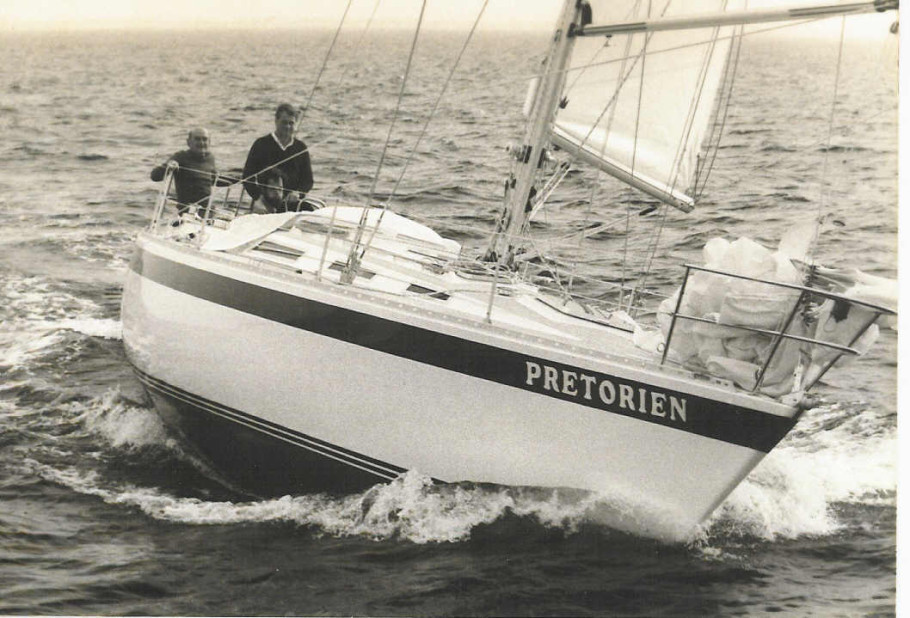
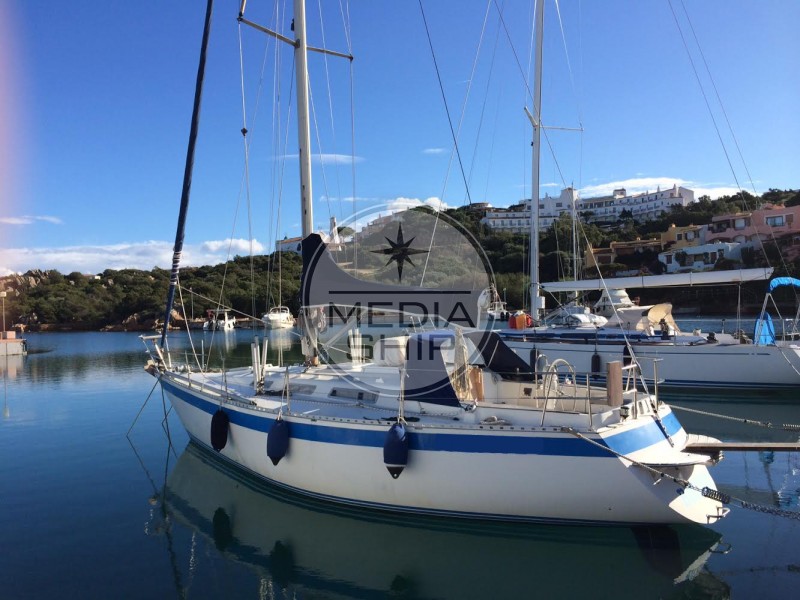
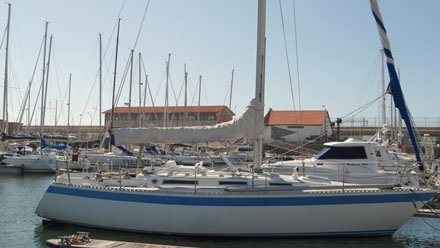
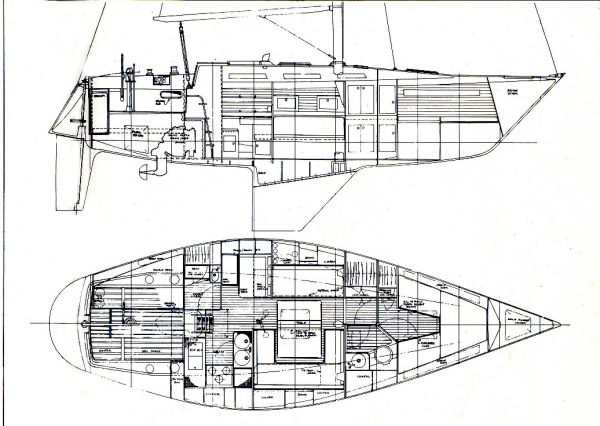
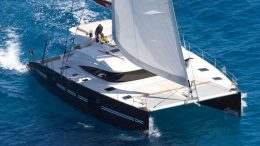
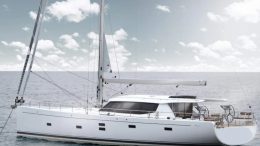
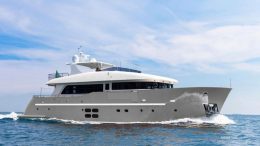
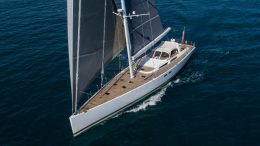
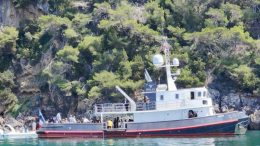
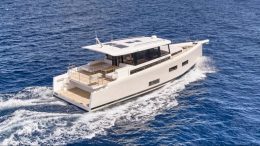
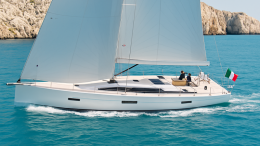
Follow us on: